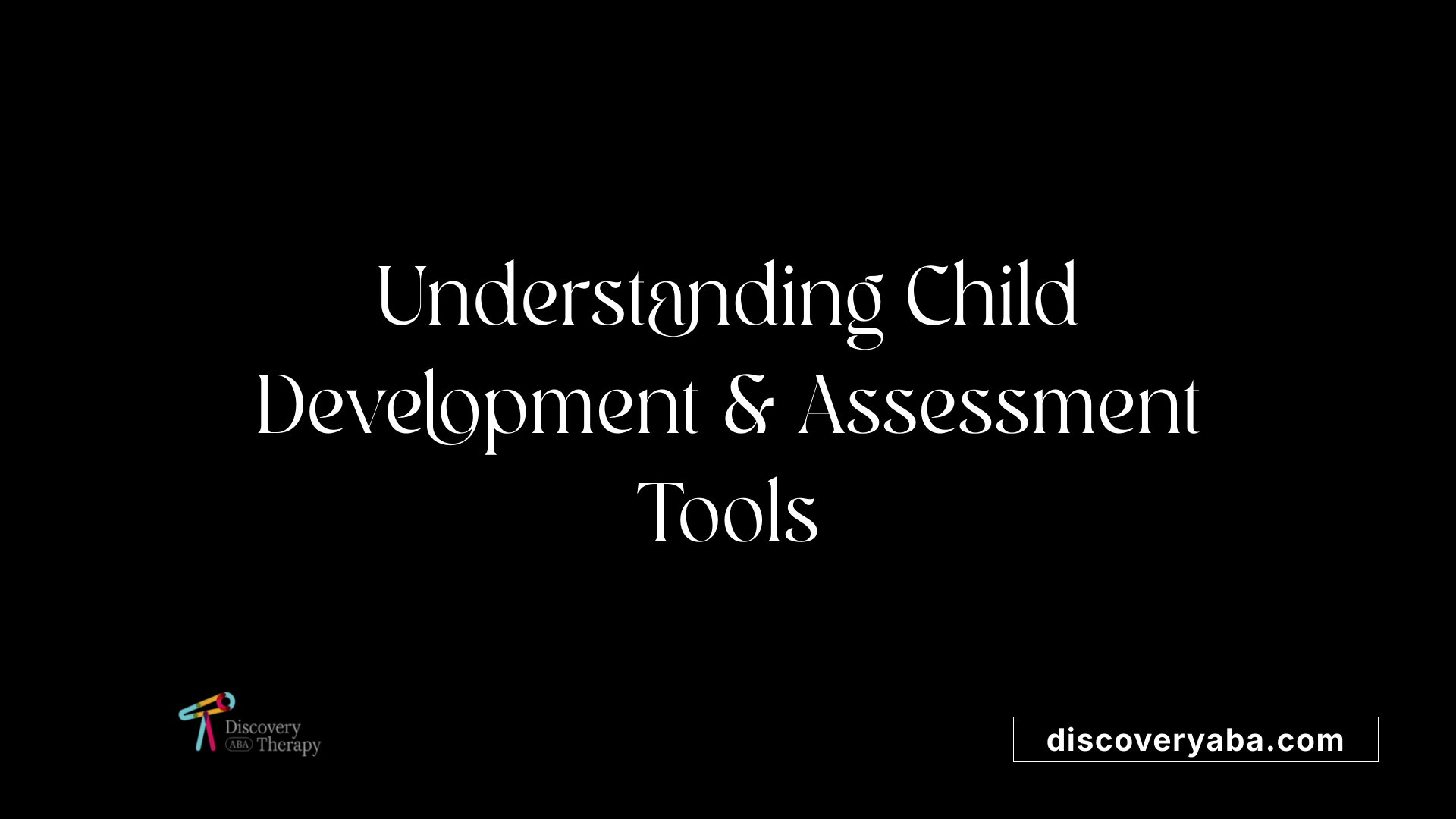How to Work with ABA Therapists to Set Realistic and Achievable Goals
A Collaborative Approach to Effective ABA Therapy Goal Setting


Introduction
Setting realistic and achievable goals in Applied Behavior Analysis (ABA) therapy requires a collaborative approach between therapists, parents, and children. These goals are essential for guiding therapeutic interventions and ensuring progress in key areas such as communication, social skills, and daily living tasks. This article will provide strategies and insights to foster effective goal-setting practices while emphasizing the importance of individualized, tailored approaches for each child.
The Role of Comprehensive Assessments

Understanding Developmental Stages
When setting goals in ABA therapy, it is essential to consider the child's developmental milestones. This includes critical areas like communication, social interaction, and daily living skills. Since developmental milestones for children on the autism spectrum may differ from typical timelines, individualized assessments are vital to create relevant and practical goals.
Using Assessments Like ABLLS-R and Vineland Scales
Tools such as the ABLLS-R (Assessment of Basic Language and Learning Skills-Revised) and the Vineland Adaptive Behavior Scales can effectively assess a child's abilities. These assessments help evaluate specific skill areas and can guide the creation of tailored goals that support the child’s unique developmental trajectory. For instance, they provide insight into how well a child communicates or interacts socially, which are foundational elements for implementing effective ABA strategies.
Aligning Goals with Developmental Milestones
Goals must be not only measurable but also relevant to the child’s real-life context. This means that they should correspond to specific developmental milestones that are appropriate for the child’s age and abilities. For example, while a neurotypical child may reach certain social skill benchmarks at predetermined ages, neurodiverse children may need alternative benchmarks to accurately assess progress and set achievable goals. Regular evaluations and adjustments ensure the goals remain aligned with effective skill development, allowing for gradual mastery and overall self-sufficiency.
Collaborative Goal Setting with Parents

How can parents collaborate with ABA therapists to set realistic and achievable therapy goals for their children?
Parents can forge strong partnerships with ABA therapists by opening clear communication channels. Setting up regular meetings, utilizing emails, and exchanging updates about their child's behavior are effective strategies. This consistent dialogue allows families to share valuable insights about their child's strengths, challenges, and daily routines, ultimately leading to therapy goals that are tailored to their unique needs.
In collaboration with therapists, families can establish SMART (Specific, Measurable, Attainable, Relevant, Time-Bound) goals to ensure both parties agree on objectives. When parents actively participate in therapy sessions, they gain crucial insights into techniques that can be implemented at home. This hands-on involvement not only aids in consistent learning but also enhances the caregivers’ ability to support their child’s development.
Additionally, celebrating milestones—no matter how small—is essential. Acknowledging achievements shapes a positive partnership between parents and therapists. By providing ongoing feedback and celebrating successes together, parents reinforce the skills learned in therapy, which significantly contributes to their child's success in both therapeutic settings and everyday life.
Characteristics of Effective Goals in ABA Therapy

What characteristics define effective goals in ABA therapy?
Effective goals in ABA therapy embody the SMART criteria: Specific, Measurable, Achievable, Relevant, and Time-bound. Each component serves a distinct purpose to enhance the therapy’s effectiveness.
Specific: Goals should clearly define what behavior or skill is being targeted. For example, instead of general improvements, specify the number of words a child should learn to say.
Measurable: Goals must be quantifiable so that progress can be tracked. If a goal states that a child should increase from 50 to 100 spoken words, this provides a clear metric for success.
Achievable: Goals need to be realistic to the child’s current skills. Challenging yet attainable objectives encourage children without leading to frustration. Setting aspirational goals based on developmental milestones of neurotypical children can help gauge appropriateness.
Relevant: Goals must connect to the child’s everyday life and needs. Focusing on skills such as basic communication enhances practicality and boosts motivation to achieve these goals.
Time-bound: Establishing a specific timeframe for each goal ensures clarity and accountability. This structure facilitates regular review sessions, allowing for adjustments when necessary.
Collaboration between therapists and families, alongside regular assessments, are essential to ensure that goals are customized and actionable, adapting to the child’s evolving needs and supporting their long-term development.
Implementing Effective Goal-Setting Strategies

What strategies and processes are involved in effective goal setting in ABA therapy?
Effective goal setting in ABA therapy adopts a structured and collaborative process that starts with comprehensive assessments to gauge a child's abilities. Tools like the ABLLS-R (Assessment of Basic Language and Learning Skills) and the Vineland Adaptive Behavior Scales offer valuable insights into the child's communication and social skills.
Setting goals should follow the SMART framework:
- Specific: Clearly define what the child should achieve.
- Measurable: Ensure progress can be tracked quantitatively.
- Achievable: Challenge the child without leading to frustration; for instance, increasing a child's spoken words from 50 to 100.
- Relevant: Align goals with the child’s daily life and cultural values.
- Time-Bound: Establish a timeframe for when goals should be achieved.
How is task analysis beneficial in goal setting?
Breaking down larger goals into smaller, manageable tasks through task analysis is fundamental. This makes goals more achievable and helps in building the child's confidence. For example, instead of setting a goal for a child to engage in spontaneous conversation, one might first aim for them to greet a peer independently in 4 out of 5 structured play settings.
Why is it essential to regularly review goals?
Continuous monitoring is crucial to maintaining goal relevance. Regular assessments allow parents and therapists to adjust goals in response to the child's evolving abilities and needs. By documenting progress, families remain engaged in their child's developmental journey and can celebrate small milestones that contribute to overall success.
Measuring and Monitoring Progress
How can progress in individualized therapy plans be effectively measured and monitored?
Progress in individualized therapy plans is best tracked through a variety of systematic data collection methods. Some effective techniques include:
- Frequency Recording: This captures how often a specific behavior occurs within a set timeframe.
- Duration Recording: This measures the length of time a behavior lasts, providing insight into persistent issues or improvements.
- Interval Recording: This records whether a behavior occurs during specified intervals, offering a snapshot of behavior across sessions.
Using these methods allows therapists to collect meaningful data during each therapy session. Visual analysis through charts and graphs is crucial to see trends and patterns over time. This makes it easier for both therapists and families to observe a child's developmental journey.
Regular reviews
Regularly scheduled reviews of progress are essential. These meetings involve therapists preparing detailed progress reports, which summarize collected data and highlight skill acquisition. During these sessions, parents can provide feedback, offering valuable insights into the child's behavior outside of therapy. This collaboration fosters a united front in understanding and adjusting goals effectively.
Adjusting goals
Adjustments to goals should be made based on the ongoing data collection and feedback from regular reviews. This ensures that the therapy remains relevant and responsive to the child's evolving needs. For example, if a child is consistently achieving set goals, new targets can be established to continue their progress. Alternatively, if a goal proves too ambitious, it can be modified to suit the child's current capabilities while maintaining motivation.
Utilizing a comprehensive approach that combines quantitative data with qualitative insights enables therapy plans to be tailored effectively. This creates a supportive environment where children can thrive and achieve meaningful progress.
Incorporating Family and Child Insights

How can family insights and child engagement be integrated into the ABA goal-setting process?
Integrating family insights and child engagement into the ABA goal-setting process involves active collaboration between parents and therapists. Engaging families provides a wealth of information regarding the child's strengths, preferences, and challenges. This understanding is critical in tailoring goals that are not only motivating but also meaningful to the child.
Clear communication between therapists and families is essential. Customized parent guides can significantly enhance understanding of ABA strategies, helping families to participate actively in the therapeutic process. When parents are involved in setting measurable goals, it ensures that these aspirations align with the child's individual needs and family culture.
Moreover, incorporating the child's interests can substantially boost their motivation and engagement. Goals should not be merely academic; they need to be functional, connecting with what the child experiences in daily life. For example, fostering a child’s ability to greet peers can seamlessly integrate into their play interactions.
This collaborative approach empowers parents, making them partners in their child’s development journey. They can reinforce skills taught during therapy at home, enhancing retention and application. Ultimately, by embracing both family insights and child engagement, the likelihood of achieving successful outcomes for children with autism spectrum disorder significantly increases.
Conclusion
Working with ABA therapists to set realistic and achievable goals is a dynamic and ongoing process that requires collaborative effort and a deep understanding of each child's unique needs. By leveraging comprehensive assessments, involving families, applying effective goal-setting strategies, measuring progress meticulously, and integrating family insights, the journey towards fostering significant improvements in children’s lives becomes more structured and hopeful. Ultimately, this collaboration transforms challenges into opportunities for learning and growth for both the child and their support system.
References
- How to Set Realistic Goals as a Family in ABA Therapy
- ABA Goal Setting: How to Set Your Child Up for Success - Elemy
- Setting Realistic Goals in ABA Therapy: A Guide
- How to set Goals for your Child with Autism - ACES ABA
- Collaborating with ABA Therapists: How Parents Can Support...
- Parent Involvement in ABA Therapy - Surpass Behavioral Health
- How ABA Therapists and Parents Can Collaborate for Maximum ...
- The Art of Talking to Parents in ABA: Tips and Best Practices
- The Collaborative Approach: Behind the Scenes of ABA Therapy
Find More Articles

How ABA Therapy Teaches Communication and Social Skills

How School-Based ABA Services Help Students with Autism Thrive

How ABA Therapy Helps Develop Patience and Waiting Skills

How to Support Your Child’s Social Interactions Using ABA Techniques

How ABA Therapy Addresses Anxiety and Fear Responses in Children

The Role of Play-Based ABA Therapy in Skill Development

How ABA Therapy Helps Build Confidence in Children with Autism

The Benefits of Center-Based ABA Therapy for School Readiness

The Role of ABA Therapy in Building Emotional Intelligence

How to Use Differential Reinforcement in ABA Therapy

Exploring Different ABA Techniques and Strategies

How to Prepare for IEP Meetings When Seeking ABA Therapy Support

How to Use ABA Therapy to Develop Resilience and Coping Mechanisms

How to Recognize Burnout in ABA Providers and Address It

The Connection Between ABA Therapy and Improved Social Skills

How ABA Therapy Helps Address Aggressive Behaviors
.jpeg)
Does Processed Food Cause Autism?

The Benefits of ABA Therapy for Adolescents with Autism

How to Reinforce ABA Strategies at Home for Consistent Progress

How to Create a Positive Learning Environment at Home with ABA

Autism And Dementia: The Connection and Differences

How ABA Therapy Supports a Lifetime of Learning and Growth

The Role of Functional Behavior Assessments in ABA

How ABA Therapy Helps with Anger Management Skills

How to Address Food Selectivity Using ABA Techniques

How ABA Therapy Supports a Smooth Transition to Middle and High School

How to Address Perseveration in ABA Therapy

The Role of Social Reinforcers in Motivating Positive Behavior

How to Navigate the Transition from ABA Therapy to School Support Services

How to Address Overstimulation and Meltdowns Using ABA Techniques

ABA for Anxiety in Adolescents with Autism

ABA for Autism and Defiant Disorder Breakthroughs

ABA for Behavioral Challenges in Autism

ABA for Picky Eating in Autism

ABA Intervention Techniques

ABA Reinforcement Methods

ABA Session Plans

ABA Strategies for Behavior Modification

Innovative ABA Therapy Activities for Growth

Exploring the ABA Therapy Age Limit Guidelines

ABA Therapy and Behavioral Assessment

ABA Therapy and Developmental Delays

ABA Therapy and Leisure Skills

ABA Therapy and Self Advocacy Skills

ABA Therapy Benefits

ABA Therapy for Autism Behavioral Health Programs

ABA Therapy for Autism Development Centers

ABA Therapy for Autism Treatment Services

ABA Therapy for High-Functioning Autism

ABA Therapy for OCD in Autism

ABA Therapy for Sensory Overload

ABA Therapy Near Me That Supports Medicaid

ABA Therapy Online Resources

A Closer Look at ABA Therapy Toys

ABA Therapy Training for Parents Unveiled

Actors with Autism

Strategies for Self-Esteem with ABA

Addressing Sensory Aversion in Autism

Addressing Sensory Seeking in Autism

Exploring Autism and Alternative Treatments: Alternative Paths to Progress

Exploring the Impact of Biomedical Interventions on Autism
.jpeg)
Autism And Bipolar Disorder

Exploring Complementary Therapies for Autism

Exploring the Impact of Equine Therapy on Autism: From Horses to Hope

The Role of Postsecondary Education in Autism: Empowering Independence

Autism and Public Speaking

Therapy Animals and Autism Support: From Companions to Healers

Empowering Autism Through Vocational Training: Unlocking Potential

The Healing Effects of Autism Art Therapy

Unlocking the Key: Autism Behavior Strategies for Success

Autism Caregiver Services Near Me in the USA
.jpeg)
Understanding Autism Complications
.jpeg)
Autism Develop Planning and Organizational Skills

Tracking Autism Developmental Milestones

The Key to Understanding Autism: The Diagnosis Code Unveiled

Autism During Pregnancy: Signs & Prevention
.jpeg)
Autism Grants: Financial Support for Individuals

Autism Holistic Support for Well-being

Key Autism Life Skills Unveiled

Addressing Autism Prevalence in the State

The Role of Routine and Structure in Autism

Demystifying Autism Spectrum Disorder Level 1 Symptoms

Silent Struggles: Confronting the Reality of Autism Speech Delay

Understanding Autism Stimming Behaviors

Autism Symptoms in Girls

Best Autism Toys for Toddlers Available

Thriving as an Autistic Young Adult

Is Your Autistic Adult Child Ready to Move Out?

How Art Therapy Benefits Individuals with Autism

Benefits of Music Therapy for Autism

Benefits of Play Therapy for Autism Explored

Navigating the Best ABA Therapy Near You

Borderline Autism in Adults
.jpeg)
Calming Strategies For Autism
.jpeg)
Can ADHD Cause Autism?

Can Autism and ADHD Overlap?

Can Autism Be Outgrown or Managed?

Can Autism Go Away? Can Children Outgrow It?
.jpeg)
Can Brain Damage Cause Autism?
Contact us
North Carolina, Tennessee, Nevada, New Jersey, Utah, Virginia
New Hampshire, Maine
Massachusetts, Indiana, Arizona, Georgia
.avif)

